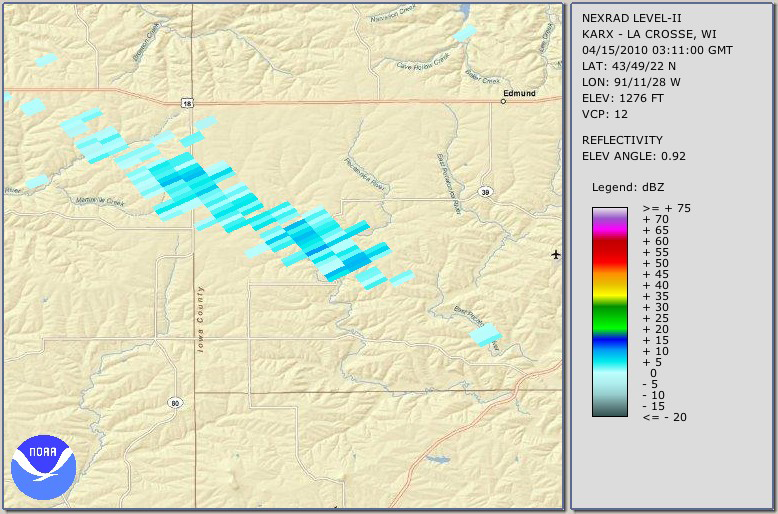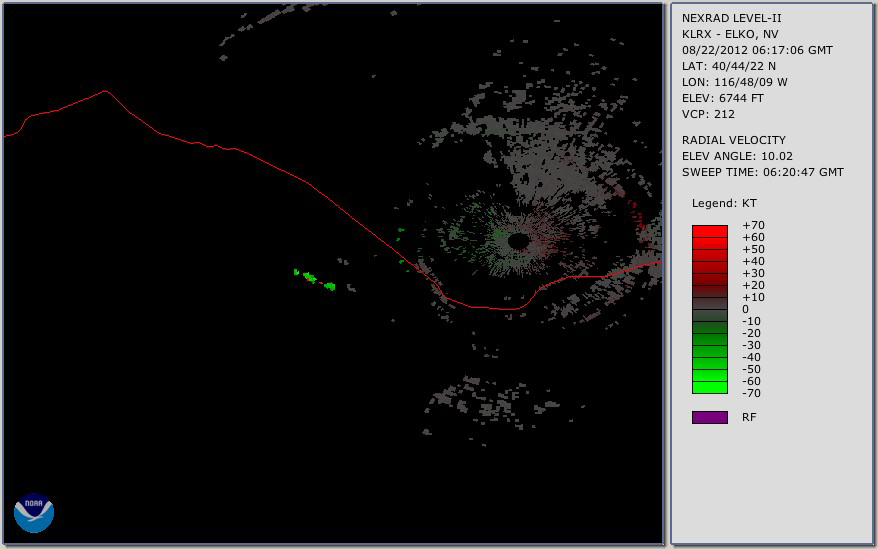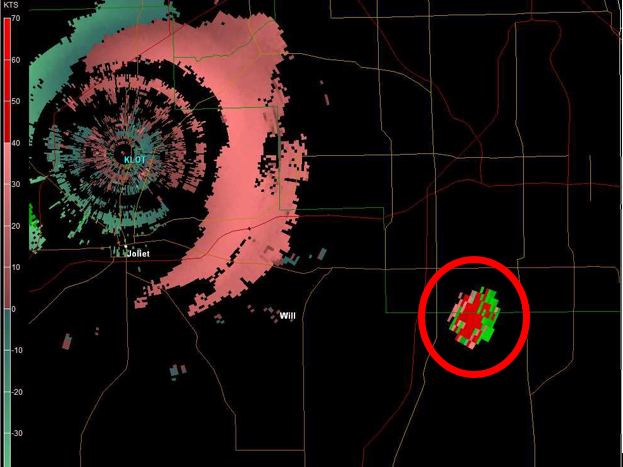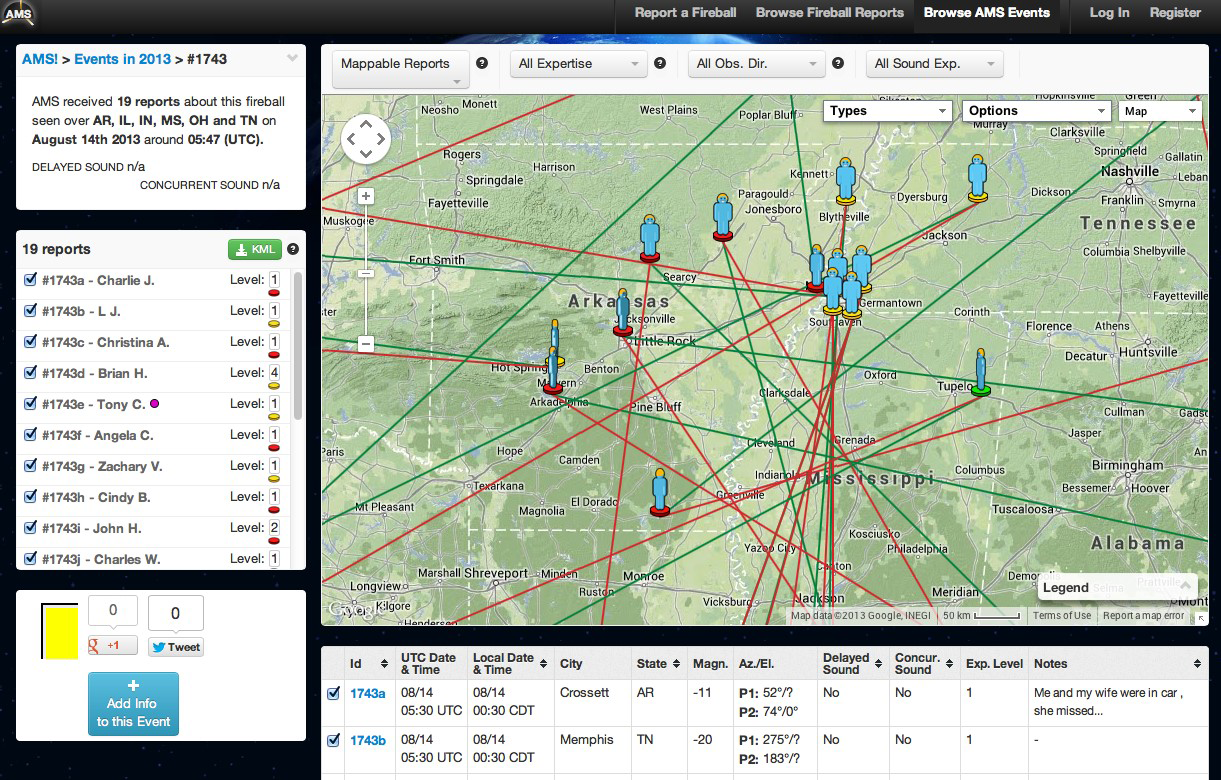HOW TO FIND METEORITES
HOW TO FIND METEORITES
HOW TO FIND METEORITES
| AUTHOR |
Dr. Marc Fries |
LAST UPDATED |
8/1/2023 @ 5:14 PM |
| AUTHOR |
Dr. Marc Fries |
| LAST UPDATED |
8/1/2023 @ 5:14 PM |
This is a step-by-step guide on how to locate meteorite falls using weather radar.
The best approach is to have several people using this technique, and then to share
their findings to reach a consensus on whether or not they have a searchable event.
This is a step-by-step guide on how to locate meteorite falls using weather radar.
The best approach is to have several people using this technique, and then to share
their findings to reach a consensus on whether or not they have a searchable event.
STEP ONE
STEP ONE
Keep an eye out for reports of large, bright events that
may indicate a meteorite fall through these resources:
The American Meteor Society
The American Meteor Society web page has a public meteor reporting page
that allows the general public to report large fireballs. They sort the
reports by event, simplifying the task of localizing the fall area. From
the AMS home page, pull down the "Fireballs" menu and select "Fireball Logs":
https://www.amsmeteors.org/fireballs/fireball-report/
Blue symbols are the locations of eyewitnesses. Green lines indicate the direction
(or "azimuth") where an eyewitness first noticed the fireball, and red lines are
azimuths pointing towards where the eyewitness saw the fireball disappear. The end
of the fireball’s visible path, or "fireball terminus", can be estimated from where
all the red lines cross. In this case, the fireball terminus is in west-central
Mississippi. Knowing this location is important, as it tells us where to start
searching through radar imagery for evidence of a meteorite fall.
The Latest Worldwide Meteor/Meteorite News
This website, managed by Dirk Ross, uses search engines to constantly search for meteor-related
activity on the Internet, and also maintains a public meteor reporting venue. Find "ALL Meteor
Sighting Reports Click Here" on the web page to visit the EW list.
International Meteor Organization
This international organization keeps track of meteor reports and data around the world.
IMO has a meteor reporting system similar to that of the American Meteor Society, but is
global in scope:
http://fireballs.imo.net/members/imo_view/browse_events.
The Meteorite List
This resources is an email listserv frequented by meteorite hunters, hobbyists,
and scientists.
STEP TWO
STEP TWO
Narrow down the search area:
Radar imagery can contain a lot of features, to include weather, birds, bats, aircraft,
and "radar noise". The following kinds of data can help narrow down the search area,
increasing the likelihood of identifying a meteorite fall if it is visible on radar.
Eyewitnesses
Beyond eyewitness report collections like those in the AMS and IMO websites, interviewing
eyewitnesses firsthand can yield useful information. Single EW reports are often contain
a measure of error, but accruing many of them may produce a small search area.
Seismic Data
Seismometers are excellent for locating meteorite falls. Fireballs that penetrate deeply
enough into the atmosphere to generate sonic booms (and are therefore good candidates to
generate meteorite falls) can produce signals in seismometer data if seismometers are
nearby.
The consortium group, Incorporated Research Institutions for Seismology (IRIS)
maintains an online database of seismometer data from around the world. Calculating a
fireball end point from seismometry data is not straightforward, and we suggest teaming
up with an expert on the subject. This technique is superb, however, producing fireball
terminus locations, altitudes, and timing.
Meteor Cameras
Several networks of "allsky" cameras exist that are dedicated to monitoring the
night skies with upward-facing cameras. The networks are dedicated to detecting
and analyzing meteors. Some of this imagery is available through internet portals,
or the operators can be reached by email. They include:
Satellite Imagery
Most civilian imaging satellites are weather satellites, and they only collect images
every fifteen minutes or longer. Detecting a fireball would require that the fireball
occur just as the satellite’s camera is taking its image, which is unlikely. In the
future it may be possible to obtain real-time imagery but for now this technique is
of limited utility.
The GOES Geostationary Lightning Mapper (GLM)
This new sensor is found on the NOAA Geostationary Operational Environment Satellite
and is very useful for detecting bright fireballs, because this instrument searches
for lightning by collecting data on bright flashes on a continuous basis. Because
meteors are short-lived, bright flashes like lightning, they show up in the GLM data
products. This new sensor is currently in development and constant data feeds are
not yet widely available.
Infrasound
Infrasound refers to very low frequency noise, which can travel long distances and is
useful for narrowing down the location of an event like a meteorite fall. No public
sources of infrasound data are currently available.
STEP THREE
STEP THREE
Retrieve and analyze weather radar data to search for signatures of a meteorite fall:
Finding meteorite falls in weather radar imagery requires practice
and patience. Fortunately the software and data are freely available.
See
Appendix 1,
"Using the Weather and Climate Toolkit" for more details.
NCDC Weather and Climate Toolkit
Click on the link above to download the Weather and Climate Toolkit radar visualization
software provided by the NOAA.
Take advantage of the tutorials! Your goal is to
learn how to download radar data and search it for meteorite falls.
Features Signifying a Meteorite Fall
Meteorite falls are often (but not always) linear features, with the long axis often
aligned in the direction of ambient winds. Meteorite falls appear in radar imagery
after the fireball has gone out, and after meteorites have sufficient time to fall
from the fireball terminus (roughly 20 km high) down to where the radar can detect
them (approximately 10 km and lower altitudes). This normally takes about 2 minutes
to occur.
Falling meteorites then appear at or near the site identified by eyewitnesses or the
other sources named above. Meteorites are size-sorted in their fall from the fireball
terminus, with large meteorites falling fastest and smaller ones requiring a longer
time to reach the ground. In most meteorite falls, the first meteorites show up on
radar 90 seconds to 2 minutes after the fireball terminus, and the last (and smallest)
meteorites disappear from radar about 10 minutes after the event.
There are several types of radar data products, but the two most useful for finding
meteorites are "Reflectivity" and "Velocity". Reflectivity data show where radar
pulses reflect off of falling meteorites (Figure 2).

Figure 2: The Mifflin, WI meteorite fall radar map. The blue pixels are from falling meteorites.
Velocity data show movement of objects in the radar image. Clouds, aircraft, and other
features normally move at fairly steady velocities, but falling meteorites produce
small-scale turbulence from the wake left by the rapidly-moving meteorites. This
produces a small area of brightly colored, intermixed red and green pixels like
that seen in Figure 3. Turbulence is only strong enough to appear on radar for
relatively large meteorites, so signatures like that seen in Figure three only
appear for approximately 2-5 minutes after the fireball terminus.

Figure 3: The strong green color indicates objects moving towards the
radar in this image from the Battle Mountain, NV meteorite fall.
Meteorite falls always move downwards. They typically, first appear in higher-elevation
radar sweeps, then progress to the lower altitudes as the fall progresses. Meteorite
falls almost always show internal turbulence, as falling meteorites leave turbulent
wakes in their paths. This appears as "candy-striping" in the velocity data, with
high-value velocities showing opposite directions in adjacent pixels (i.e. bright
pixels with green and red interspersed).

Figure 4: This image shows a single sweep from the Park Forest, IL
meteorite fall in velocity data.
The radar itself is at upper left in both images, and falling
meteorites are seen at lower right. Note the bright red and green pixels, showing
high wind speeds. The colors indicate winds moving towards the radar (green) and
away from the radar (red). Note how the two colors are interspersed, showing that
winds are turbulent from the violent passage of falling rocks. By comparison, almost
all the other radar returns in this image are from clouds.
APPENDICES
APPENDICES
Using the NOAA Weather and Climate Toolkit for Recent Meteor Events
METEORITES 101
These instructions will show you how to best preserve the meteorites you
discover and how to make contact with the organizations that are willing
to accept and analyze your find.
Don't know exactly what a meteorite is, what they are made of or where
they come from? If that's the case, we have provided a mini-"crash"
course in what you need to know about them.
It turns out that meteorites have provided us a lot of scientific insight,
not only into the origins of our solar system and planet Earth, but what
the future might hold for mankind.
There's a lot going on in the study of meteorites, both here at NASA
and in other places. Here are a few links to the people and institutions
who are leading the research in this field.



